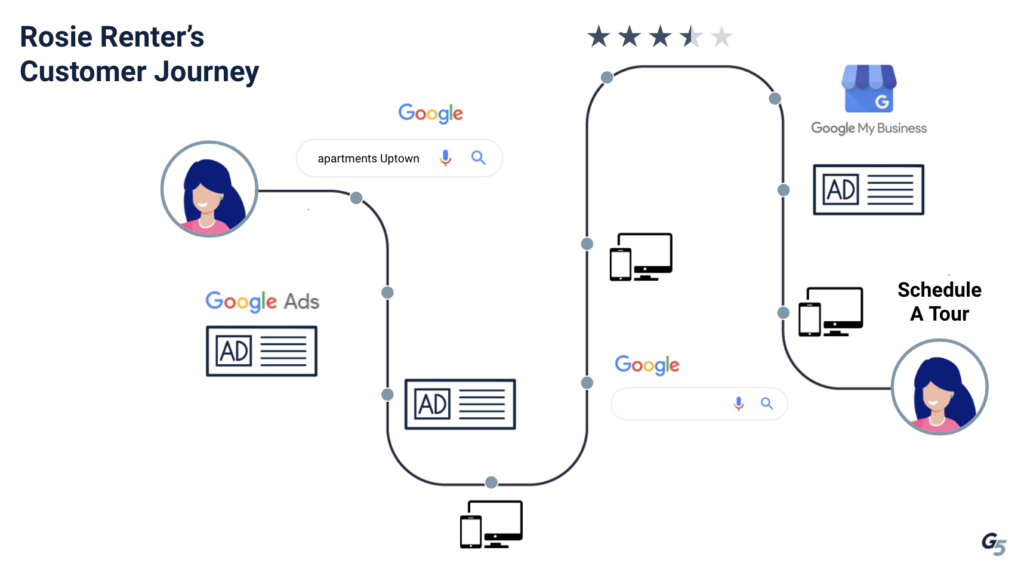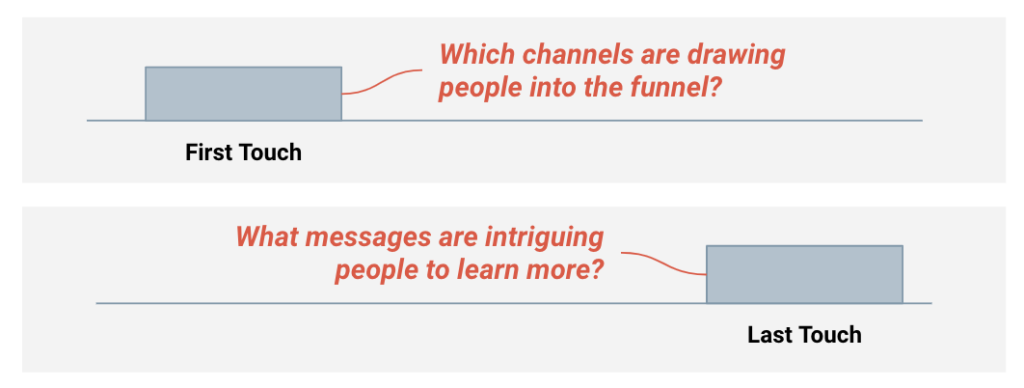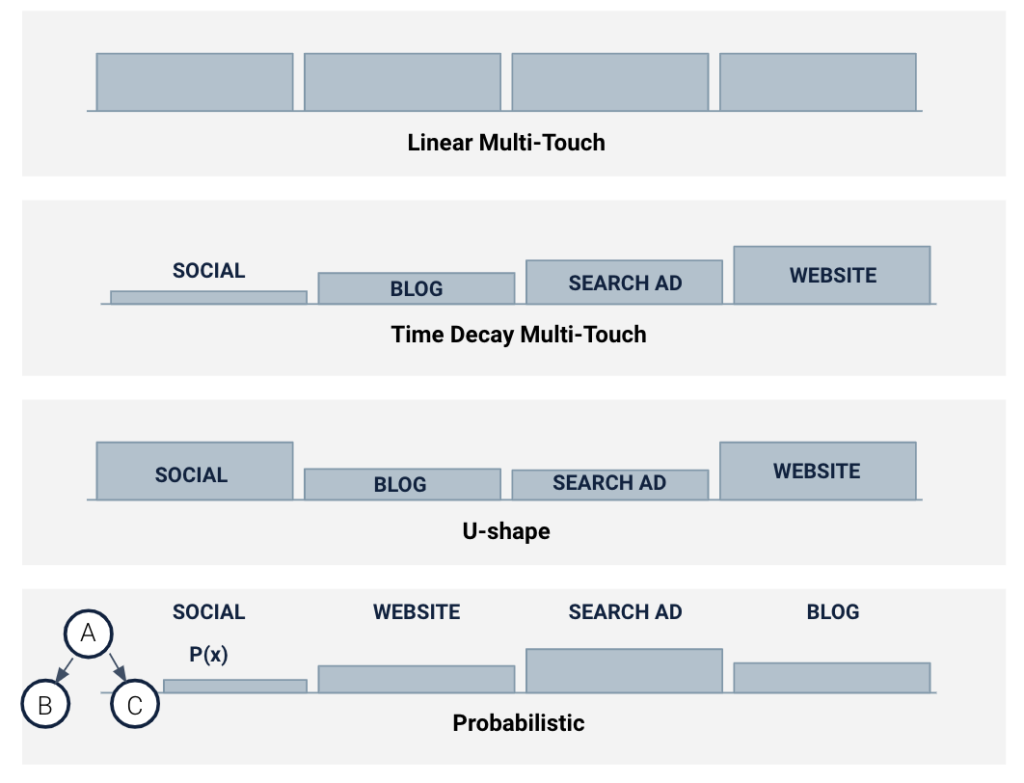
Marketing Attribution Explained
Marketing attribution helps marketers make sense of their metrics. Metrics, like the number of ad clicks or website sessions, do shed light on marketing performance at a high level. However, they also conceal a few important details about a prospect’s online journey. Marketers want to know whether their overall campaign efforts are working, not just how many people visited the website. Ultimately, they want to know which marketing sources are driving inquiries to their properties so that they can adjust their tactics.
Getting deeper insights into the buyer’s journey is important so we can prioritize the specific channels, media, and campaigns that actually move a prospect through the buyer’s journey to ultimately sign a lease. Attribution provides an additional layer of data that is needed to understand which marketing tactics influence customers.
What is Attribution?
Attribution is the set of rules that define and assign credit for how conversions are assigned to touchpoints in a buying journey. It helps marketers understand which sources are driving leads by looking at every touchpoint on your buyer’s journey to determine which had the most influence on the decision to tour, visit your property, or sign a lease. Think of it as a digital version of the, “How’d you hear about us?” cards that many leasing teams use to determine lead sources.
Digital marketing attribution looks at a buyer’s digital footprint. Today’s complex digital buying journey involves many touchpoints and leads could come directly from an organic search, digital search ads, display ads, Google My Business listings, an ILS, or a social media post or ad. With so many online sources to track, attribution is valuable for understanding which sources – and more granularly, which media, content, keywords etc. – are working the best for your audience.
Let’s look at how attribution paints a clearer picture of the touchpoints on your renter’s digital journey.
The Online Renter’s Journey
Imagine Rosie Renter realizes her lease is up in 3 months — she’s so on top of this — and wants to move to a more bustling neighborhood, closer to her favorite shops and restaurants. She goes online, searching for “apartments Uptown Dallas”. This gives her a general sense of what’s there. She clicks on the first ad she sees. It’s a nice-looking place, but it was further from her favorite shops and restaurants than she’d like. So she goes back to the search and clicks on an ad for Posh Pillars. This property really catches her eye. It has a great pool, underground parking, and seems like a hip place to live. Rosie looks at a few other properties but returns to the Posh Pillars website. She looks at available floorplans, reviews amenities, and looks at the neighborhood map. Rosie then looks up Posh Pillars on an apartment review website, spends time mapping her commute to work, and checks out other local hot spots on Google Maps. This is it! She types “Posh Pillars” into her Google search, clicks on the first thing on the results that says Posh Pillars (an ad), and then calls the number she sees on the website.

Attribution and the Renter’s Journey
This example is a pretty basic renter’s journey. Rosie saw 3 ads, clicked on 3 ads, visited a review website, looked at Google Maps, and visited the property website three times. If you were viewing this as data in a marketing dashboard for Posh Pillars, you’d know you’d gotten 2 ad clicks, 2 website sessions, and that one ad led to a conversion.
You wouldn’t know that these actions were all tied to one renter or that the engagement with one ad subsequently resulted in other interactions with the property. You might give “credit” for the conversion to the last ad that she clicked. Still, you would not know that the first ad may have influenced her decision or that her engagement on the website later resulted in her doing a branded search, which led to that final conversion.
This is where the science of attribution becomes more important and understanding how each model works is important to today’s marketers.
Attribution Models Explained
A number of attribution models are widely used by marketers today, but the most common are single-touch and multi-touch. Which model you select depends on the data you would like to collect and the questions you need to have answered. Marketers use a variety of attribution models to evaluate marketing performance, but the most common are single-touch and multi-touch.
Single-touch Attribution Reveals Basic Insights
Single-touch attribution is the most basic form of attribution modeling, assigning 100% of revenue credit to an individual campaign or touchpoint – whether first-touch or last-touch. If we used a last-touch attribution model in our example, we would have given 100% credit to the last source that drove a prospect to “convert” (i.e. click on an ad or call a community using a phone number on the website. This might be OK for businesses that have shorter buying cycles, but your renter’s online journey may be weeks or even months.

Multi-touch Attribution Looks at the Whole Journey
Multi-touch attribution takes into account multiple touchpoints in the renter’s journey. This supports a more nuanced view of human behavior than a single-touch model. There are varying degrees of sophistication for MTA models.
- Linear attribution evenly distributes credit to each touchpoint a renter engaged with before converting. This model assumes that each source contributes equally to a conversion.
- Time decay attribution is similar to linear attribution in that it also gives credit to each touchpoint in the renter’s journey, although not equally. Instead, it assumes touchpoints that are closer to the conversion event are more important.
- U-shaped multi-touch attribution takes it a step further by assigning 40% of the credit to each the first and final interactions. The remaining credit is then distributed evenly among the remaining touchpoints.
- Probabilistic attribution tracks the entire buyer’s journey from the first click to the last call. It utilizes a proven data science model (Markov Chains) to measure the impact that removing an individual touchpoint has on conversions. Touchpoints are weighted and ranked according to their probability to impact conversions.

Multi-touch attribution is not a new concept, but it is one that is often misunderstood. While MTA models do consider the entire buying journey, linear, time-decay, and U-shaped models make broad assumptions about prospects’ behaviors that could have a major impact on results.
Deciding which attribution model works best for your marketing stack can be challenging. Check out our blog, Multi-touch Attribution Powers Predictive Marketing, to discover how smarter attribution can lead to more qualified leads.
Get News, Articles & Updates in Your Inbox
Thank You for Your Interest
We will be in contact soon and look forward to learning more about you and your company. Based on your marketing challenges, we’ll discuss increasing visibility into your analytics and how to generate more and better leads so you can achieve your marketing goals.
In the meantime, we invite you to check out our checklist on website accessibility. Use this checklist to start assessing the baseline accessibility of your website.
Enjoy! We’ll be in touch very soon.
